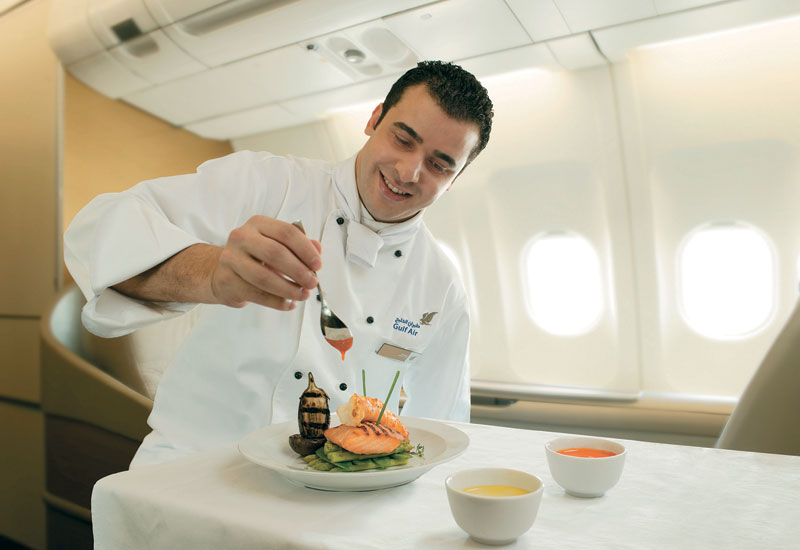 Airlines are increasingly focusing on providing a gourmet experience for passengers and personalising their culinary needs is now higher up the list o
Airlines are increasingly focusing on providing a gourmet experience for passengers and personalising their culinary needs is now higher up the list o
With many airlines offering a somewhat similar product in terms of routes and cabin features, Bernhardt believes that it really does come down to delivering an outstanding personalised service through the whole travel process. “In-flight catering is a major factor alongside safety and comfort when onboard,” he said. “Offering the passenger a top-quality meal that satisfies their expectations is the essential goal. However, it is the way in which the service is provided that positively adds to influencing them to fly Gulf Air again.”
So whilst in-flight catering clearly does add to the passengers flight enjoyment, the real question for recession-battered airlines is to what extent is it a worthy investment of ever-tightening budgets?
For one of the region’s leading airlines, Emirates, the investment has been huge. In July 2007, Emirates launched its US$120 million catering facility, equipped with the latest in food safety and hygiene management. Today, the impressive Emirates Flight Catering (EKFC) has more than 6,000 employees who produce an impressive average of 95,000 meals per day for passengers travelling on around 300 different flights into or out of Dubai International Airport.

| Advertisement |
Like Bernhardt, Robin Padgett, vice president for aircraft catering at Emirates, believes that the concept of hospitality to travellers is historically ingrained as a key part of the region’s cultural heritage. “From its start 25 years ago, Emirates took in-flight catering to be a core part of its service proposition and thus standards have always been very high,” said Padgett. “Our aim is to further improve on this high base to offer even better quality meals that better match the diverse tastes of our customers.”
The carrier’s menus are developed by highly trained chefs and tailored to meet the regional preferences of travellers. For example, a Japanese chef would be used to create a regional range of sushi for the Japanese route or an Indian specialist to cater for the customers on flights to the Indian subcontinent. “We believe that in-flight catering is an important factor in how customers perceive their journey – great meals are a part of a great journey,” saidPadgett.
“You need to start with attention to detail and passion for great food of all kinds, with these you can then develop menus that tempt and satisfy your customers.” With this attitude, it is not surprising that Emirates has won many accolades for its ‘tempting’ in-flight catering, including the ‘Outstanding Food Service by a Carrier Middle East 2009’ award (for the second year running) as well as the ‘Kitchen Team of the Year’ at the Caterer Middle East Awards 2009. The attention to the in-flight catering service is detailed.
Whilst few airlines have as impressive a catering facility as Emirates, others have preferred to fully outsource their in-flight meals to catering specialists. LSG Sky Chefs is the classic example of how in-flight catering has become a highly profitable niche business. Currently holding the lionshare of 35% of the global market in airline catering, the German-headquartered business consists of 130 companies with more than 200 customer service centres in 51 countries. In 2009, it produced around an incredible 405 million airline meals for more than 300 airlines worldwide.
With over 70 years catering experience behind it, the caterer has developed specialised skills in the planning, implementation and management of all processes related to in-flight services. This includes the design, development, procurement and logistics related to in-flight services equipment, all services which undoubtedly come in handy for today’s busy airline managers. Three years ago, the in-flight catering guru was awarded the management of catering facilities at Abu Dhabi International Airport, producing up to 30,000 meals per day.








 Search our database of more than 2,700 industry companies
Search our database of more than 2,700 industry companies









